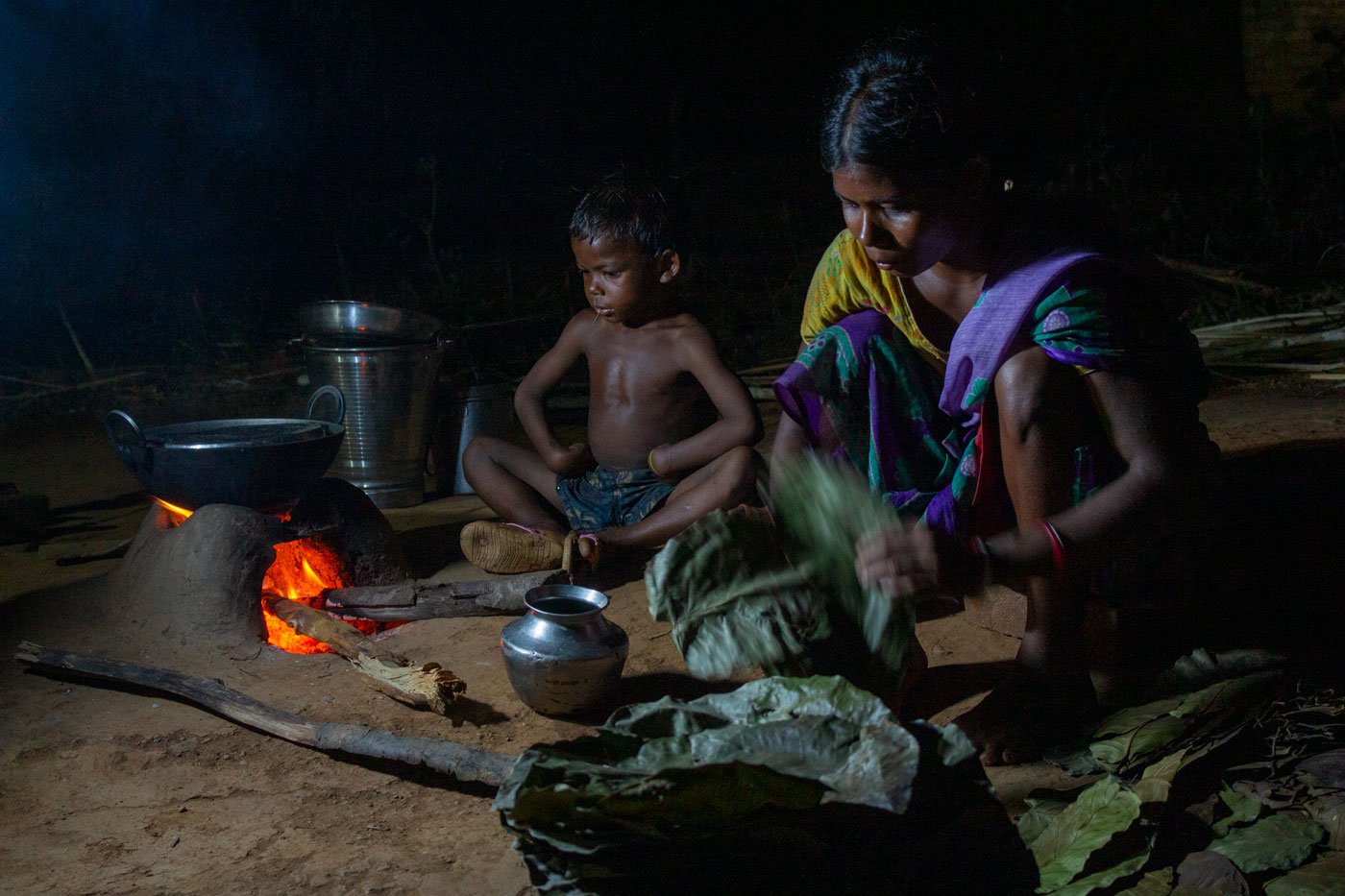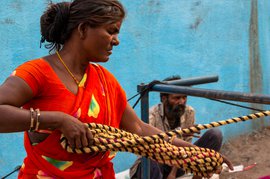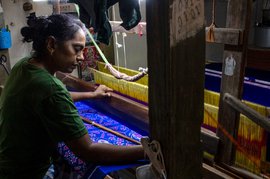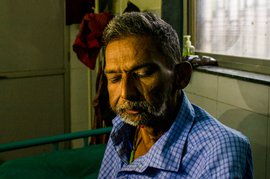It was night when I reached Sabarpada. Its eleven houses lie off the road, on the edge of Kunchia village in Banduan taluk a – a group of small mud dwellings that belong to the Savar (also called Sabar) community here in West Bengal.
Their homes, half-tucked in darkness, mark the beginning of the forest that grows more and more dense as it rolls on and merges with the Duarsini hills. This forest of sal, segun, piyal and palash trees is a source of food – fruits, flowers and vegetables – and livelihood.
The Savar community is listed as both De-Notified Tribe (DNT) and Scheduled Tribe in West Bengal. They were among the many tribes branded as 'criminal' by the colonial British government's Criminal Tribes Act (CTA). In 1952, the Indian government repealed the Act, and the tribes are now referred to as De-Notified Tribes (DNTs) or Nomadic Tribes (NTs).
Even today, families in Sabarpada (also known as Sabarpara) depend on the forest for a living. Nepali Sabar, 26, is one of them. She lives in her mud house in Purulia district with her husband Ghaltu, two daughters and a son. The oldest child, a nine-year-old daughter is still in Class 1. The second one is a toddler and the youngest daughter still on her mother's milk. The family's earnings depend on sal ( Shorea robusta ) leaves.

Nepali Sabar(right) with her youngest daughter Hemamalini, and son Sooradev by her side is sitting outside her house. She is connecting sal leaves with a small bamboo stick to get the leaf plates ready
Of the 11 families in the village, seven make and sell plates made of leaves from sal trees. Trees that belong to Duarsini forest. A forest that runs up the hills. Hills that border the village. “ Nau baje yahan se jaate hai. Ek ghanta lagta hai Duarsini pahunchne mein [We leave from here at about nine in the morning. It takes us an hour to reach Duarsini],” Nepali says.
Before the couple can leave for the forest, there is food to be cooked, and Nepali is at work in the front yard of her house. The children and husband are to be fed, the elder daughter to be sent off to school, the youngest to be left in the care of her second one. If any neighbours are around, they may keep an eye on her children.
Husband and wife start working as soon as they reach Duarsini forest. Ghaltu, 33 climbs the tree and cuts small and large leaves with a small knife. Meanwhile Nepali plucks the leaves that she can easily reach from the trees around. “ Baara baje tak patte todte hai. Do-teen ghante lagte hain [We cut and pluck leaves till around 12 noon. It takes two to three hours],” she says. They return home by noon.
“We eat once again after we are home.” Ghaltu has to rest after that. A siesta is important to him, but Nepali rarely does. She starts making the plates from the leaves. A single plate takes eight to ten sal leaves, joined together with, thin bamboo sticks. “I go to the market to buy the bamboo. A single piece costs 60 rupees and can last for three to four months. It is Nepali who splits up the bamboo,” says Ghaltu.
It takes Nepali a minute or two to make one plate. “We can make 200-300 khali patta in a day,” she says. Khaali patta or thaala is the word Savars use for leaf plates. The target can be reached if Nepali is at it for eight hours in the day.

"When I go out to the market to buy bamboo, I pay sixty rupees for one, which lasts for 3-4 months for us. Nepali does the work of splitting bamboo poles,” says Nepali’s husband Ghaltu Sabar
Nepali makes the plates and Ghaltu handles the sale.
“We don’t make much. Sixty rupees for every 100 plates? We get about a 150 to 200 rupees for a day’s work. A man comes to our doorstep and buys them from us,” says Ghaltu. That works out to 60 to 80 paisa for a plate. And two of them making 250 rupees a day is much worse than the rather pathetic daily wage rate for unskilled labourers under MGNREGA in the state.
“He helps,” she says almost defensively about Ghaltu responding to my amazement at how hard she works. “He works for a vegetable vendor. Not every day, but whenever they call him and gets 200 rupees on that day. May be two-three times in a week,” she adds.
“This house is in my name,” Nepali quickly adds. A peal of laughter follows after a brief pause. Her eyes light up, a reflection of the little mud house in them.



